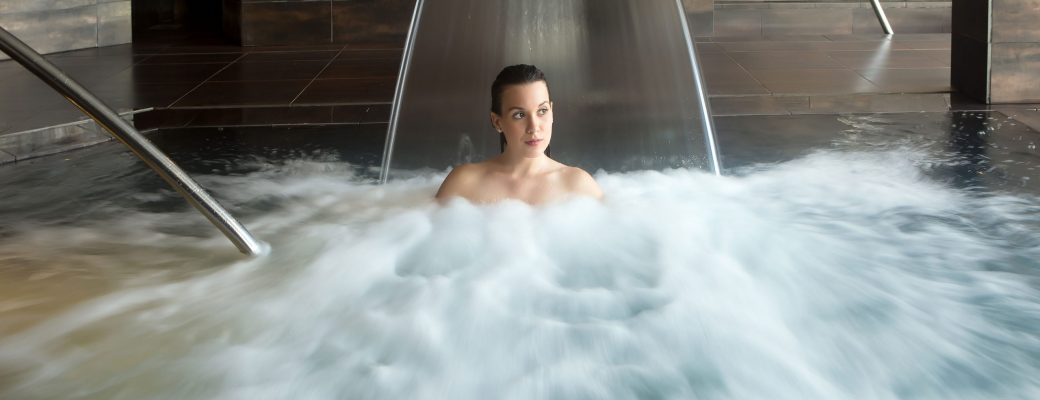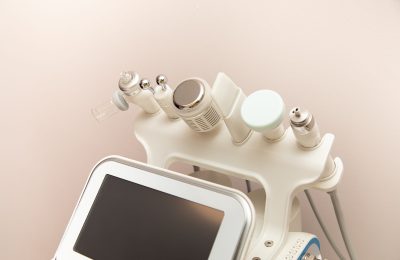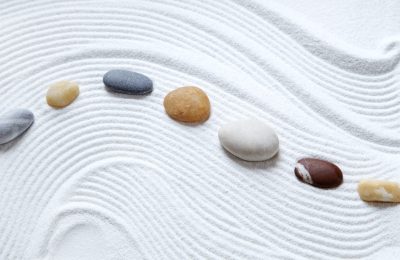Driven by a facilitated digitization of the world around us, the spa industry is currently evolving with advanced technologies in…
Just Add Water
Why hydrotherapies are hot – and cold
Water cures are steeped in legend. One example is the story of nineteenth century European peasant Vincent Priessnitz. Working in the forest, he observed a doe that would come to dip its wounded leg into a stream every day before heading back into the woods; eventually, it fully recovered. Years later – after suffering several rib fractures from a fallen log – inspired by the doe, Priessnitz applied torn shirt pieces soaked in icy water to his injuries for several days until his bones finally healed, and he was able to share his success with neighbours.
A more recent and perhaps better-known case concerns a California-born child suffering from rheumatoid arthritis. To simulate the hydrotherapy tanks deployed by his son’s rheumatologist, the lad’s inventor father brought a pump home to create a mini-whirlpool in their bathtub. The swirling waters greatly eased the pain and joint movement of young Ken Jacuzzi, and by 1968, third-generation Jacuzzi brother Roy had invented and marketed the first self-contained home whirlpool bath. An entire industry was born.
Ancient cultures have long believed that water therapy can strengthen the immune system and boost health and well-being. For centuries, Celtic peoples made use of holy wells (natural water springs) and lived life in concert with the cycles of nature, innately knowing the invisible life force within. For me, a symbol of this knowing is the Celtic cross, which portrays physical and spiritual forces intersecting and strengthening each other, linking the well-being of body and mind in the circle of life.
It was once trendy in North America for spas to install hydrotherapy bathtubs, but many of them sat empty because of the combined lack of understanding – of both spa professionals and their clients – of water’s power to renew, restore and revitalize. Given today’s newfound enthusiasm for wellness activities, it is now time for the reemergence of water as a primary source of therapy.
I’m not saying you have to spend millions on a sophisticated new aquatic facility – something very few spas could afford in any case. The compact Swiss shower, which jets water onto the sides and top of the body, provides an affordable solution for confined spaces.
Or, instead of installing a shower, there are simple treatments that many spas can perform on their clients – or that therapists and clients alike can use themselves, at home – to fortify a recent spa visit. Furthermore, clients really appreciate it – as we know from prescribing an appropriate skincare program, you deepen your value to your clients when you give them suggestions for home selfcare rituals.
A contrast shower is one such treatment. Extremely popular among Europeans, it starts with a warm or hot shower or bath causing vasodilation, followed by cold water causing vasoconstriction. A good way to start – for beginners – is to spray cold water on the feet, then the legs, arms, core, back of the neck and head. This visibly dilates the capillaries, and the effect is extremely invigorating. I do it every day and always feel fantastic afterwards.
Kneipp hydrotherapy
Sebastien Kneipp was a Bavarian priest and pioneer naturopath who accelerated his recovery from tuberculosis by dousing himself with cold water from a watering can. His so-called “Kneipp Cure” called for the application of water through various methods, temperatures and pressures to achieve therapeutic effects. Kneipp’s name still lends itself to a whole range of hydrotherapy treatments, including:
1) Affusion hydrotherapy
This invigorating contrast treatment, taking its name from the Latin “to pour on,” could work well in a spa’s wet room. Training a high-velocity hose (Scotch Hose) with pressurized alternating warm and cool or cold water, the therapist intentionally uses smooth effleurage strokes on a specific muscular area of the body to increase circulation and aid detoxification.
You can do this yourself at home in the shower or with a garden hose on a warm summer’s day. I love this therapy for its re-setting effect on tense, stiff muscles.
2) Contrast foot bathing
This involves dipping a foot alternately into a bowl of cold and then a bowl of warm water or walking along a hydrotherapy path with different water temperature zones. It’s ideal for ankle or foot problems, to help decrease inflammation and pain, and can be performed easily as an add-on treatment in spas with limited space. You could also do this at home – or a modified version – walking along the seashore, lakeside or river with your bare feet in and out of the water.
Health benefits of contrast water therapy
European medical spas have known offering water therapy treatments to their clients create soothing experiences while helping to accelerate post-procedure healing. Benefits include:
1. Building immunity. Studies have shown that contrast hydrotherapy boosts the growth of at least four types of immune cells in the body. Using it post-procedure will help with healing. Continued use will add the benefit of helping the body ward off colds, flu and other ills.
2. Improving blood and lymph circulation. Blood is the transportation system of the body, carrying oxygen and nutrients and removing wastes. The passive movement of the muscles combined with changing water temperature helps stimulate blood and lymph (this is the origin of the term hydromassage).
3. Healing injuries. Our bodies react to warm water, improving blood circulation and cellular function to aid healing of injuries. Water therapy improves joint mobility and relaxes muscle and connective tissue. Cold water provides a contrast that tends to push the blood away again, helping it to carry off waste material and unwanted substances.
4. Detoxification. Cold water applied to the skin causes blood vessels near the skin to constrict, sending the blood to the organs and the core of the body, taking extra nutrients to those areas. Switching back to warm water on the body reverses the process, attracting blood away from the organs and tissues in the core, carrying with it cellular waste and toxins and other unwanted matter which it helps ferry to organs that will expel them from the body.
5. Providing invigoration. Increased circulation eases the movement of nutrients to organs and extremities in the body, for an overall improvement in well-being and a more rejuvenated appearance.
Water therapy for therapists
Therapists often suffer the effects of exhaustion and burnout, yet need to be healthy to authentically facilitate wellness experiences. Self-care is a must and water can help:
- Between clients, wash and purify your hands; after washing, hold your upturned wrists under running cold water to revitalize yourself before your next client.
- Cultivate a bathing ritual for yourself – as the foundation of your self-care and for relaxation. Personally, I am an avid aromatherapy user; my life is enriched beyond words with the use of essential oils.
- Take a contrast shower at home – finish a warm shower with cold water by immersing body parts one by one in cold water, as mentioned above, while singing your favourite song. Add body brushing to further stimulate the circulation if time permits.
- Tension relief – when you feel tension from a long day built up, for example, in your trapezius muscles, allow your shower water to cascade and pulsate (waterfall effect) on the muscles to help relax, release tension and let go of the holding of stress, strain and emotions.
In short, water purifies and restores the body-mind. Why not be more intentional and expand your horizons by deepening your sensorial experience of water in your daily routine?




